Installation views
Text
The Mimic, the Model and the Dupe is an exhibition by artist Mike Cooter. It consists of number of works from the Leicester City Council collections (many of which are rarely on display), new works made for the occasion, a number of refabricated artefacts and loans, and the exhibition architecture itself. Commissioned by Radar (Loughborough University Arts), the project began from two reference points: the ‘object theatre’ of Polish theatre director and artist Tadeusz Kantor (1915 – 1990) and the work of Leicester-born naturalist Henry Walter Bates (1825 – 1892). Through his research in the Amazon, and particularly by recording defensive adaptations among particular species of butterflies, Bates was to identify a specific form of mimicry in the natural world. The title of the exhibition refers to the relationship between predator, prey and mimic that ‘Batesian mimicry’ identifies. More broadly, research on mimicry in nature looks at the strategic formal alterations (in colour, shape, movement, sound) different species make in order to evade predators– a form of disguise, or of copying, analogous to theatre, or illusion and deceit.
The exhibition architecture and the objects within it are structured on a number of historical models, and particularly the work of three individuals who worked primarily in architecture – Eileen Gray, Frederick Kiesler and Sigurd Lewerentz. A collage by Gray from the museum collection suggests the floorplan, and a number of railings designed by Lewerentz – refabricated in part by using machinery in the industrial history collection – articulate the gallery space’s circulation (alongside further bespoke railings modelled on Lewerentz’s originals).
The constellation of this exhibition relates to the hopes that Kantor had with regards to his ‘object theatre’ – a form of drama in which objects would have the same status (and performative potential) as the humans that performed with them. Specifically: how a shoulder joint is articulated on a simple timber puppet defines its range of motion. Or, put another way, this ‘design’ determines the object’s structural potential – the range and type of interactions that might be generated by engaging with it. In this way, Kantor’s Anti Exhibition (1963), an exhaustive display of preparatory materials that would lead up to the production of an artwork, but without the artwork itself, is seen to exhibit the engineering of the space for something to exist – all of the factors that determine a form, in this way shifting the focus away from a singular object towards all of the factors involved in creation.
The exhibition guides you to look at how things are structured, how formal concerns communicate across different disciplines, the relationship between infrastructure and superstructure, void and shell, inside and outside and everything in between.
Individual images
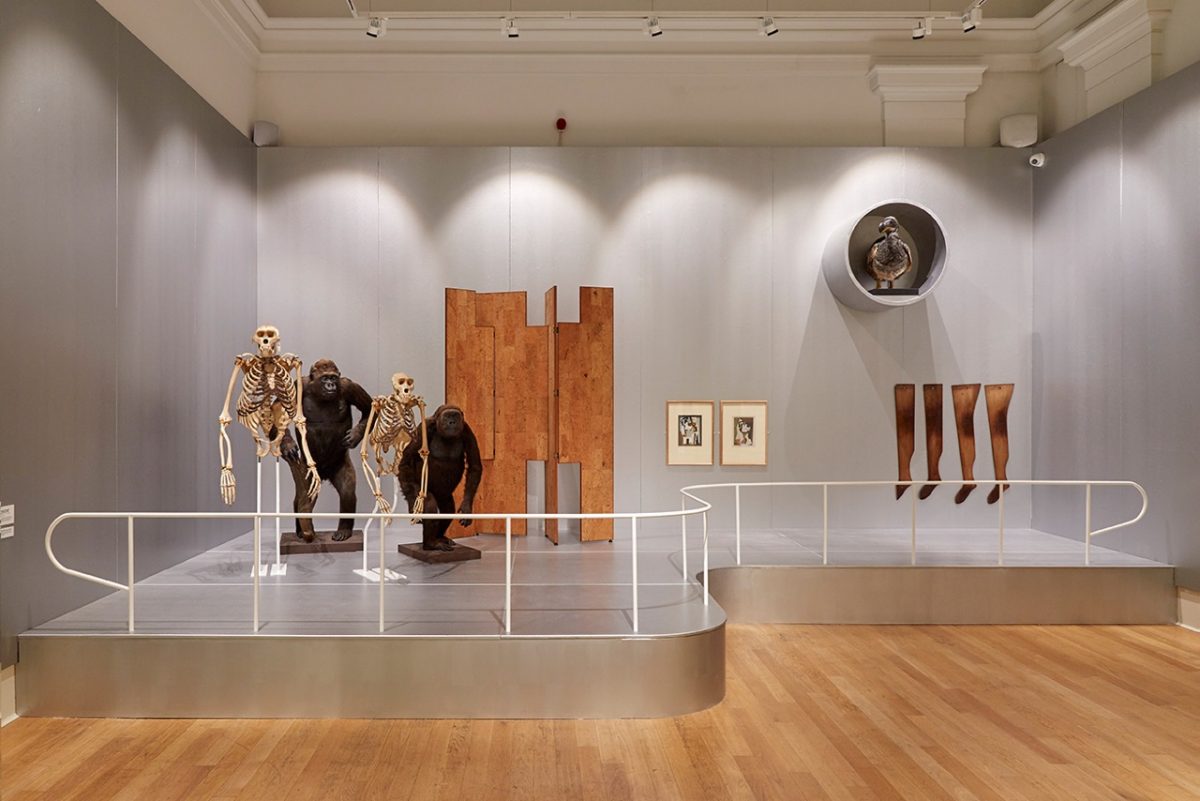
1.
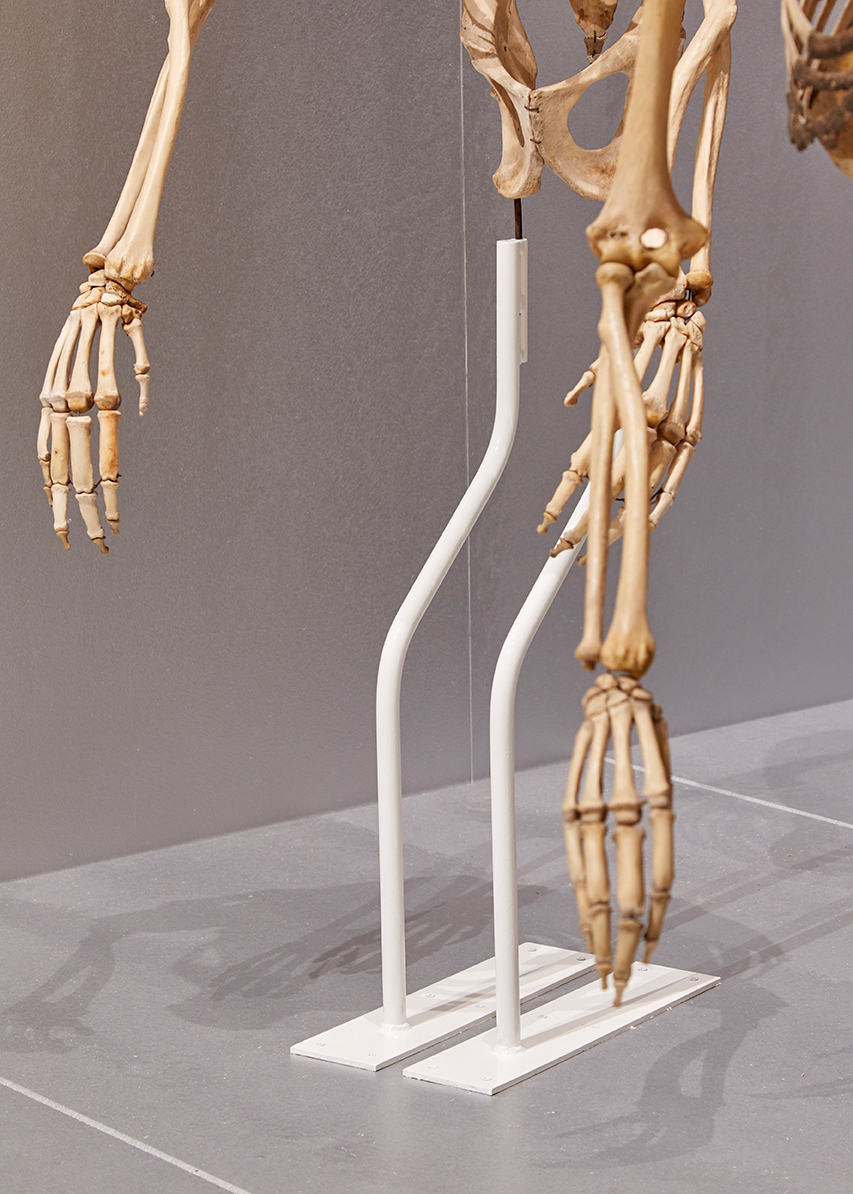
2.
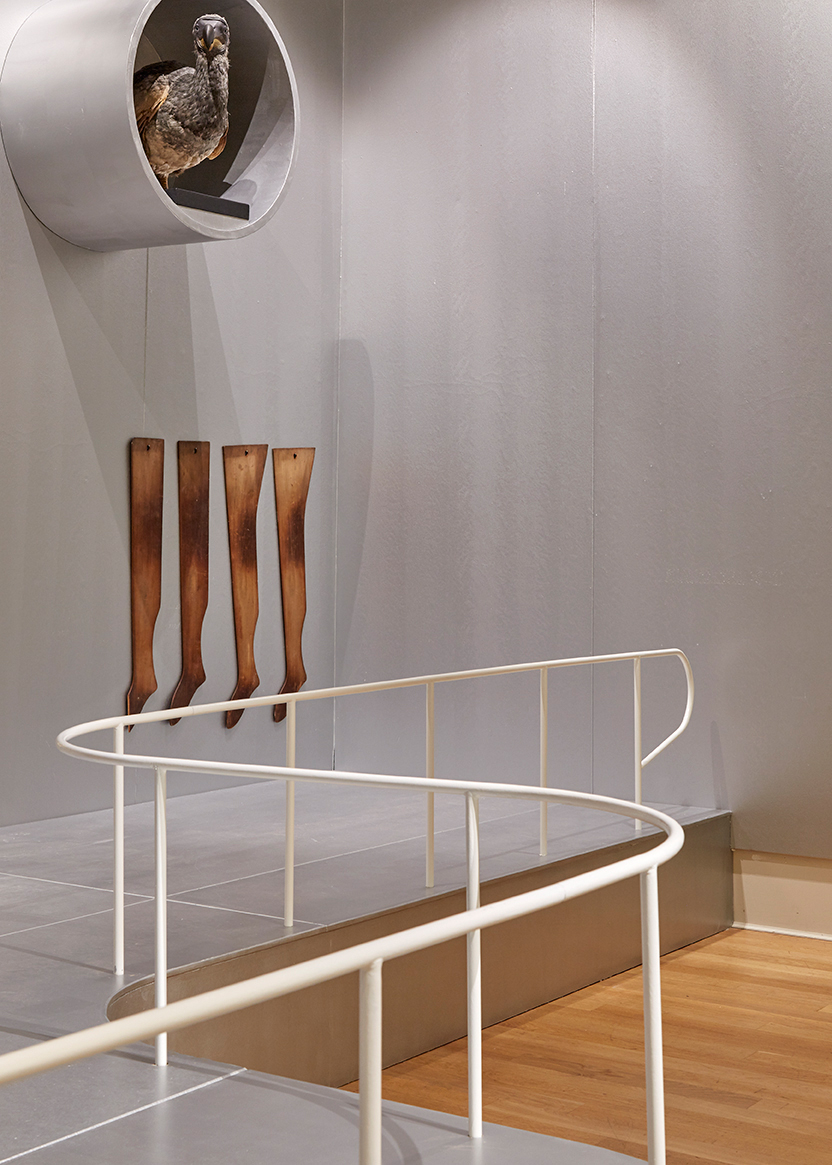
3.
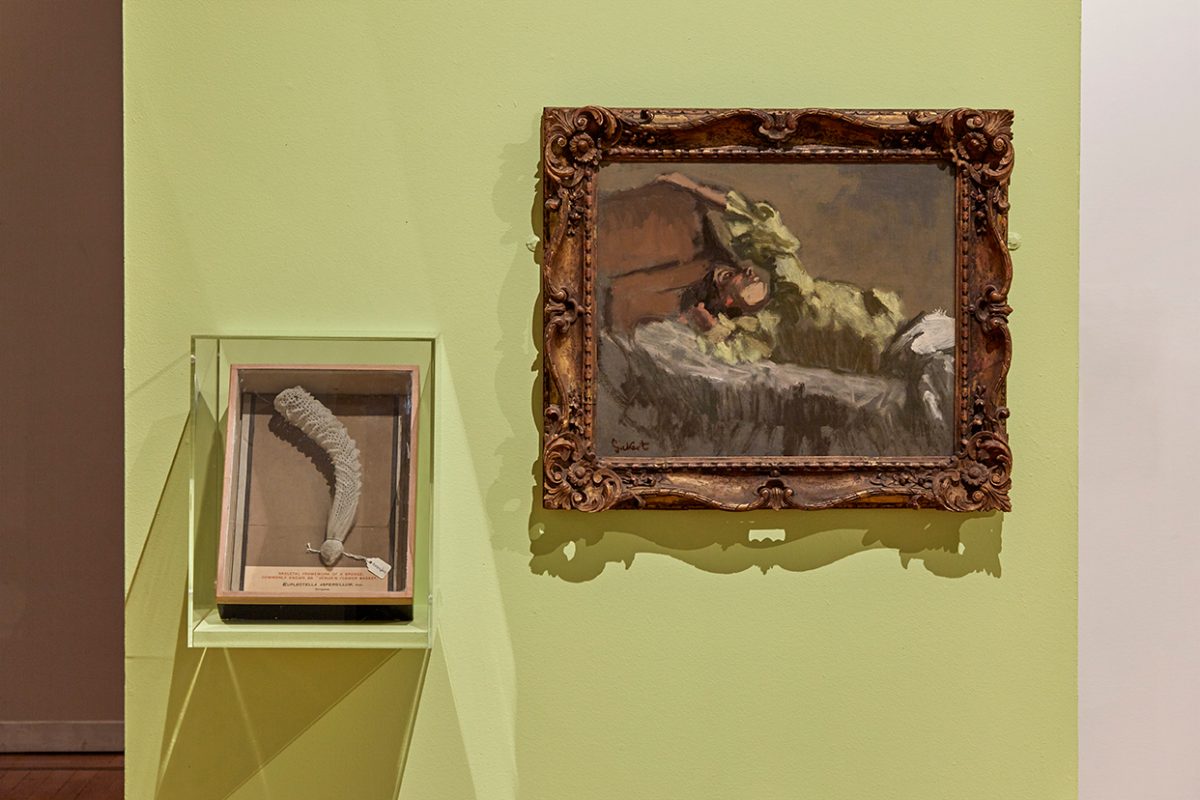
4.
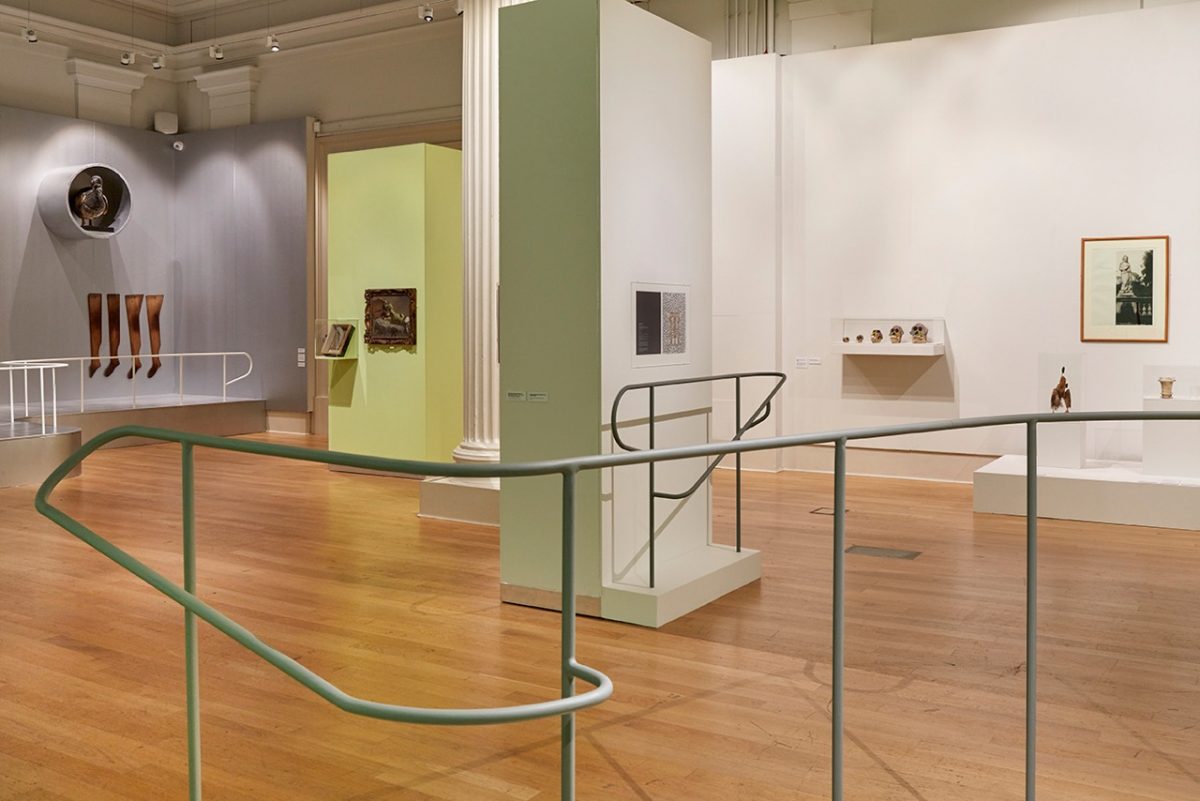
5.
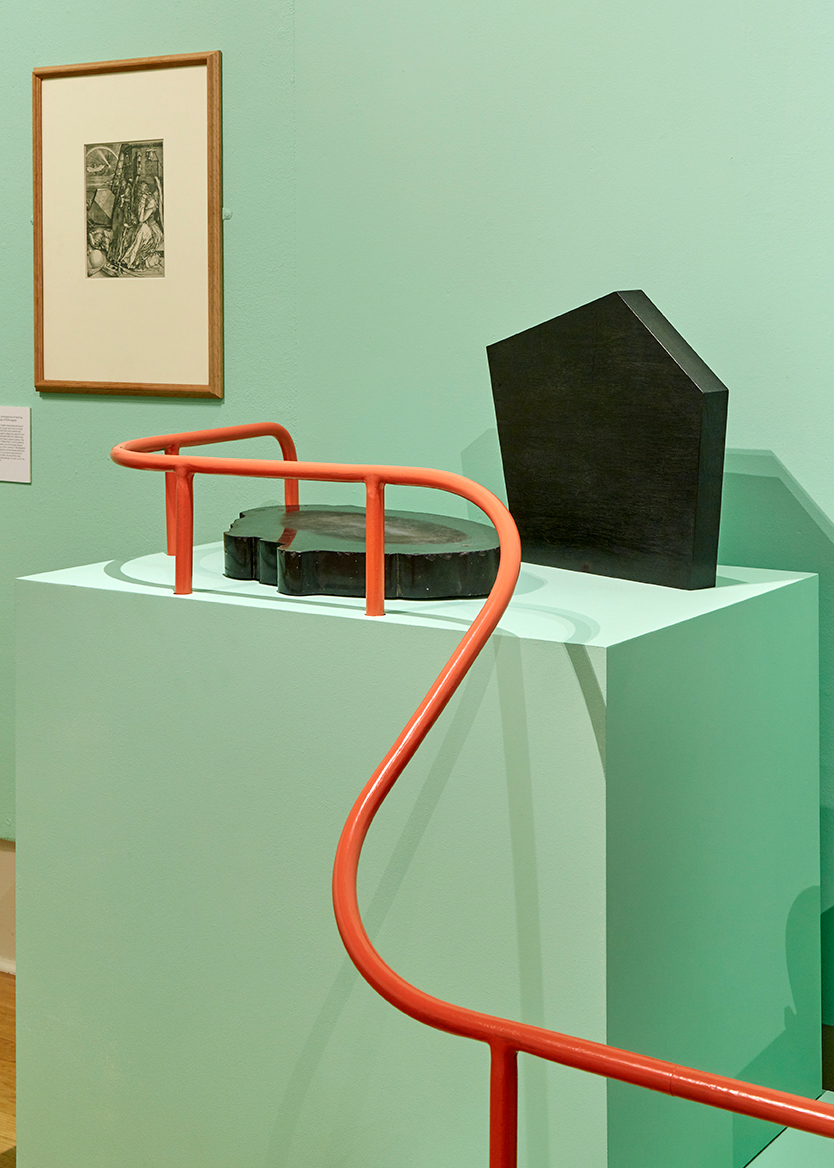
6.
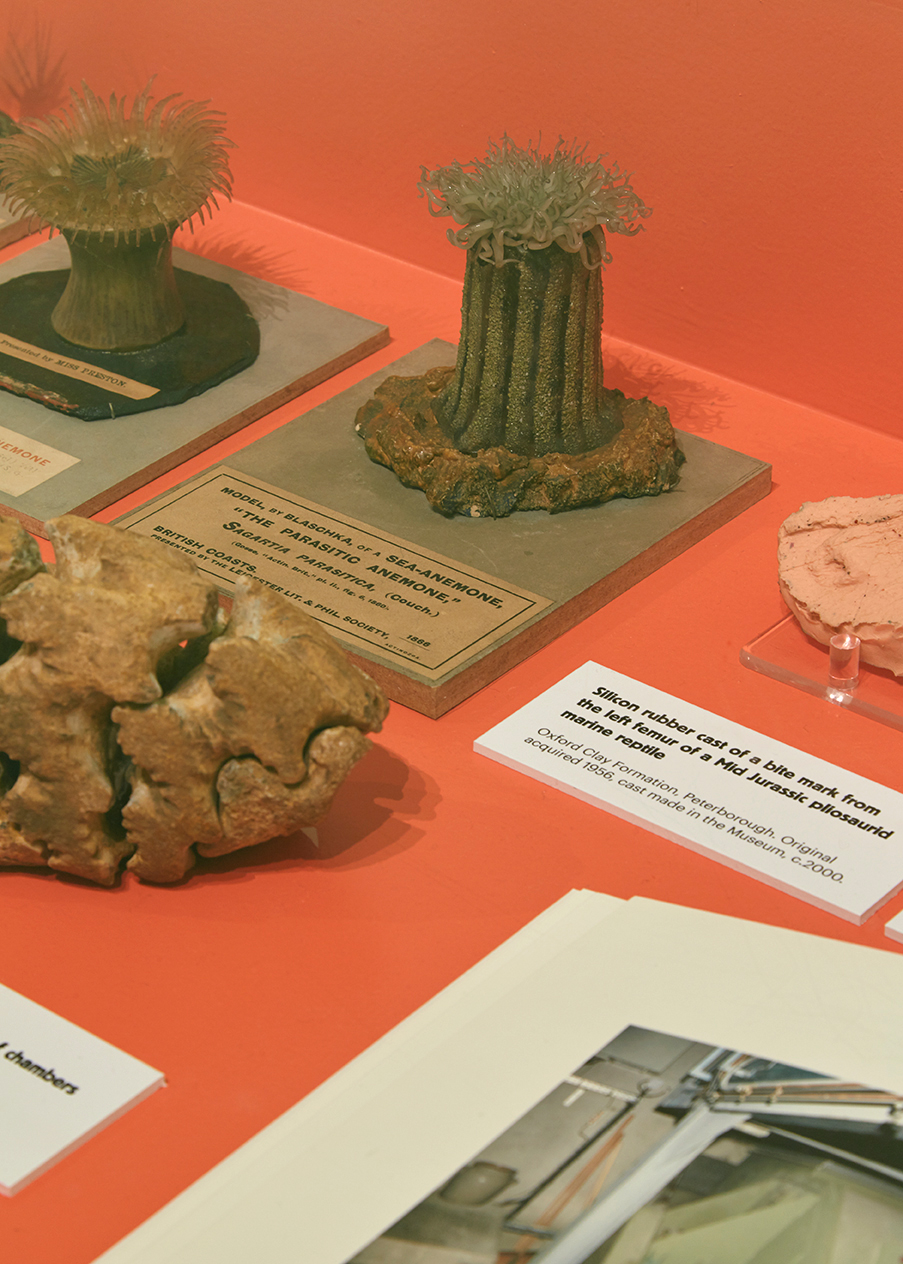
7.
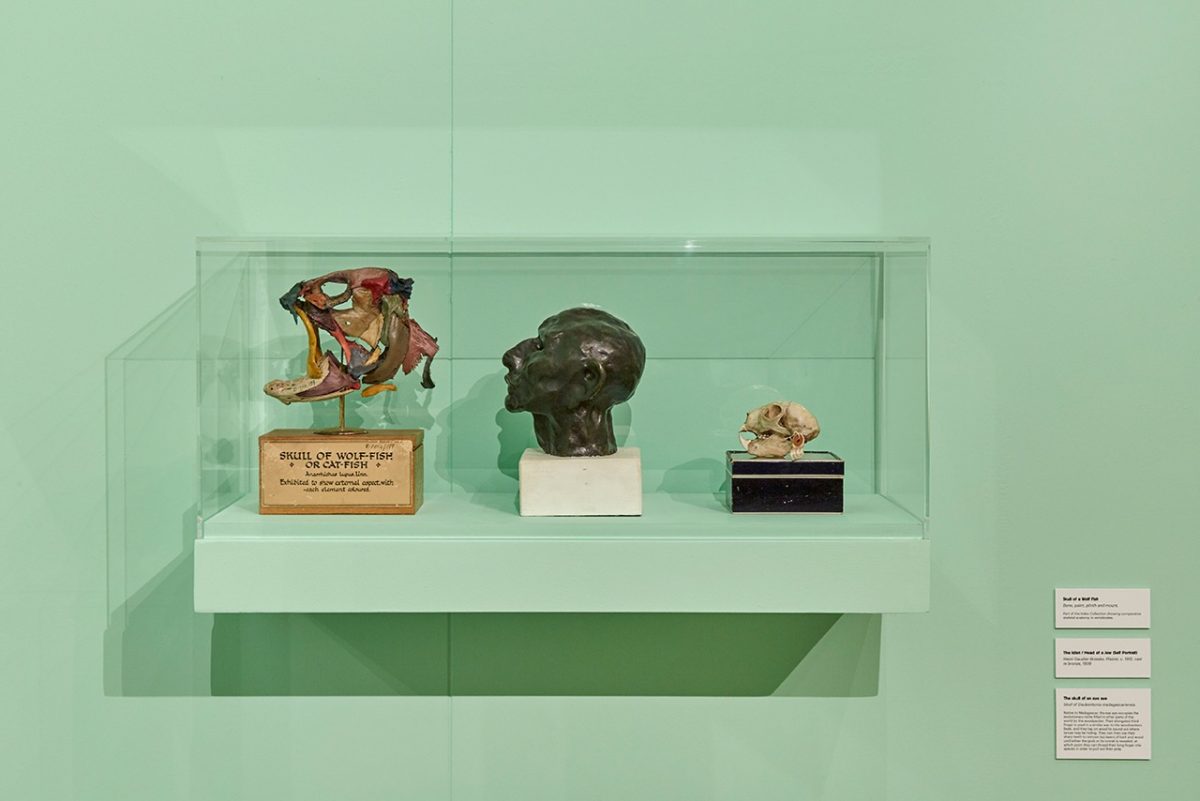
8.

9.
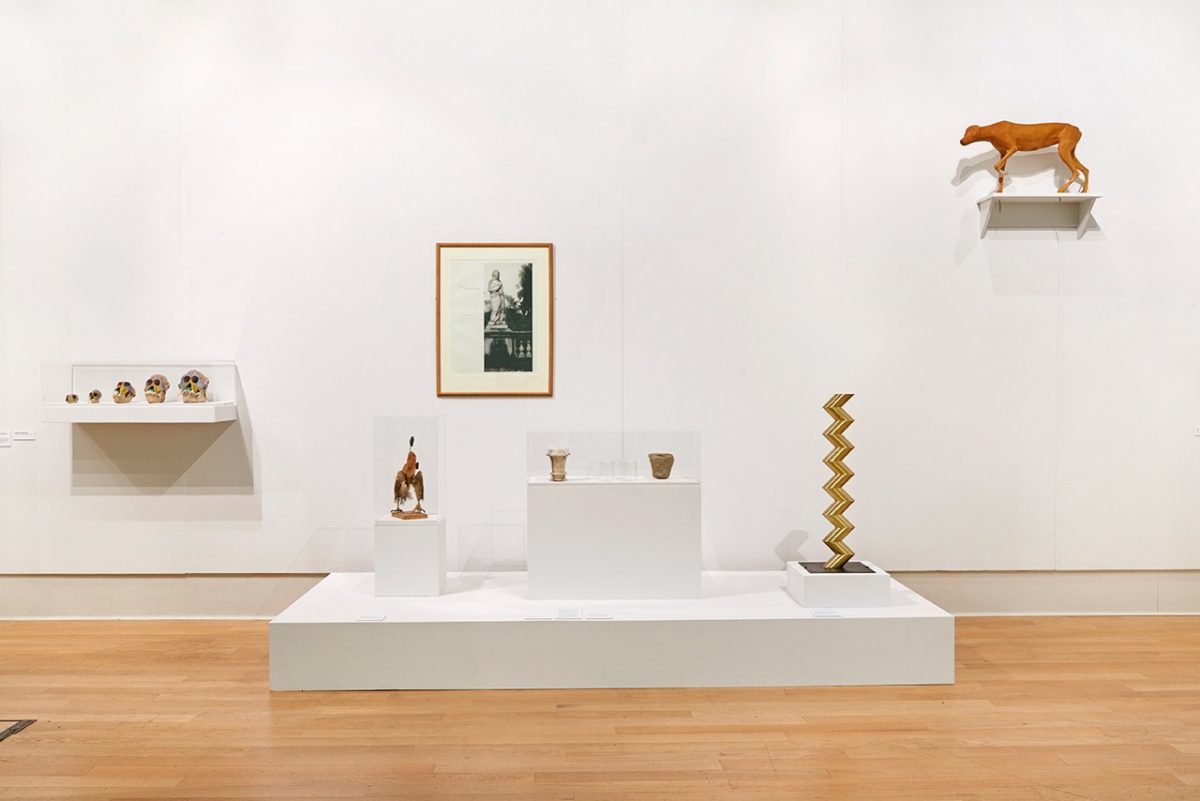
10.
Labels
1. Exhibition view of Mike Cooter’s “The Mimic, the Model and the Dupe” at
New Walk Museum and Art Gallery, Leicester, 2018. Bespoke exhibition display
with (l-r): female and male gorilla taxidermies with original skeletons on bespoke
mounts; fourfold screen in mahogany and cork, Eileen Gray (design 1960s,
executed 1973); Two Abstractions (from the series Dix Pochoir), Pablo Picasso
(1920); taxidermy model of a dodo by Roland Ward, London (goose and ostrich
feathers, head cast and armature); four flat wooden shaping boards for nylon
stocking fabrication (date unknown), produced for Elliot of Swanwick,
Derbyshire.
All images courtesy the artist and Radar, Loughborough. Photos by Corey Bartle-
Sanderson.
2. Bespoke gorilla mount and gorilla skeleton detail, “The Mimic, the Model and
the Dupe” by Mike Cooter, 2018.
3. Exhibition view of Mike Cooter’s “The Mimic, the Model and the Dupe” at
New Walk Museum and Art Gallery, Leicester, 2018.
4. Exhibition view of Mike Cooter’s “The Mimic, the Model and the Dupe” at
New Walk Museum and Art Gallery, Leicester, 2018. Left: The skeletal
framework of a sponge, Euplectella aspergillum (commonly known as Venus’s
Flower Basket). Right: The Yellow Sleeve, Walter Sickert (oil on canvas, 1903-4).
Wall colour: Pantone 379c.
5. Exhibition view of Mike Cooter’s “The Mimic, the Model and the Dupe” at
New Walk Museum and Art Gallery, Leicester, 2018. Foreground: Guidance 1
(Sigurd Lewerentz), Mike Cooter (hand-painted steel, 2018).
6. Exhibition view of Mike Cooter’s “The Mimic, the Model and the Dupe” at
New Walk Museum and Art Gallery, Leicester, 2018. Detail of bespoke
exhibition display with two bases for sculpture from the museum stores and
(background) Melencolia I, Albrecht Dürer (photogravure of etching, 1910 folio
copy (?) of 1514 original).
7. Exhibition view of Mike Cooter’s “The Mimic, the Model and the Dupe” at
New Walk Museum and Art Gallery, Leicester, 2018. Detail of vitrine showing
one of a selection of Blaschka glass sea anemone models (c.1870) and other
materials.
8. Exhibition view of Mike Cooter’s “The Mimic, the Model and the Dupe” at
New Walk Museum and Art Gallery, Leicester, 2018. Vitrine with (l-r): skull of a
wolf fish (Index Collection of comparative anatomy); The Idiot / Head of a Jew (Self
Portrait), Henri Gaudier-Brzeska (plaster c.1912, bronze 1939); the skull of an aye
aye.
9. Exhibition view of Mike Cooter’s “The Mimic, the Model and the Dupe” at
New Walk Museum and Art Gallery, Leicester, 2018, with section of Guidance 2
(Sigurd Lewerentz), Mike Cooter (painted steel, 2018) and two pages of an auction
house catalogue (Phillips de Pury, New York) depicting the Murmansk
centrepiece (or fruit dish) by Ettore Sottsass (1982).
10. Exhibition view of Mike Cooter’s “The Mimic, the Model and the Dupe” at
New Walk Museum and Art Gallery, Leicester, 2018. Wall (l-r): painted primate
skulls from the Index Collection; Wrapped Venus, Villa Borghese, Christo (print
with collage, 1963); foam internal former for a taxidermy fox. Plinth (l-r): damaged
and incomplete taxidermy of a common buzzard; turned marble finial (museum
stores, date unknown); A set of four glasses, Mike Cooter (bespoke scientific
glassware, 2018); trace fossil of the burrow occupied by a sea anemone –
Kulindrichnus langi.
